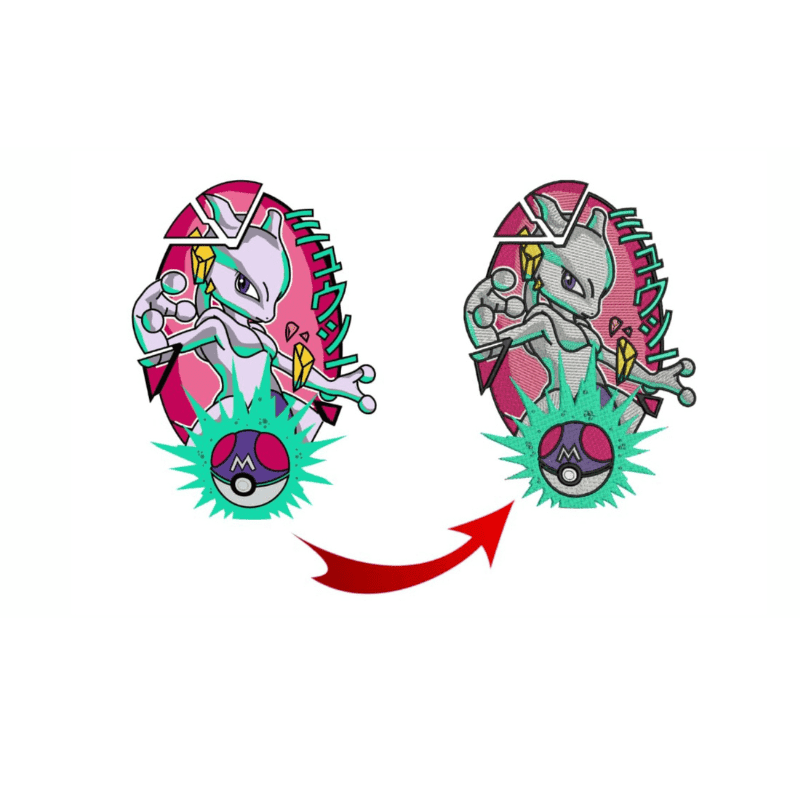Personalized Digitizing for Embroidery: Customized to Your Demands
Personalized Digitizing for Embroidery: Customized to Your Demands
Blog Article
Mastering the Embroidery Digitizing Refine: Your Ultimate Overview
Embroidery digitizing is a careful craft that needs accuracy and experience to convert elaborate styles into digital formats for machine embroidery. As craftsmens get started on this trip to understand the needlework digitizing process, an extensive understanding of the fundamentals sets the foundation for quality.

Understanding Embroidery Digitizing Basics
Embroidery digitizing basics form the structure whereupon intricate designs are translated into machine-readable formats for precise stitching. This initial action in the embroidery digitizing procedure is critical for making certain that the last stitched product is a devoted representation of the original layout. Comprehending embroidery digitizing fundamentals includes grasping crucial concepts such as stitch types, sew instructions, thickness, rug, and draw compensation.
Sew types play an important duty in establishing the aesthetic and textural result of the stitched design. By choosing the suitable stitch type, whether it be satin, fill, or running stitch, digitizers can achieve the desired effect and enhance the overall quality of the embroidery. In addition, sew direction affects the circulation and measurement of the layout, while thickness identifies the spacing and coverage of the stitches.
Additionally, underlay sewing offers stability to the style by safeguarding the material and stopping distortion during the needlework procedure. Pull settlement is another necessary consideration to combat the all-natural propensity of textile to contract when stitched. Understanding these needlework digitizing essentials is essential for developing professional-quality embroidered items.
Picking the Right Digitizing Software
Selecting the suitable digitizing software program is a crucial decision that substantially affects the efficiency and quality of the embroidery digitizing process. Digitizing for Embroidery. When selecting the ideal digitizing software program, it is important to take into consideration elements such as the complexity of designs you prepare to develop, the user-friendliness of the software, the level of client assistance supplied, and the compatibility with your embroidery device
There are different digitizing software program choices offered in the market, ranging from fundamental programs for newbies to innovative software program for expert digitizers. Some popular choices consist of Wilcom EmbroideryStudio, Hatch Needlework Software Application, and PulseID. These software program packages use a wide variety of devices and functions to help you create complex layouts with convenience.
Prior to deciding, it is suggested to explore the various software program choices via cost-free trials or demos to identify which one ideal matches your requirements. Additionally, checking out reviews and seeking suggestions from seasoned digitizers can offer important understandings into the staminas and weaknesses of each software (Digitizing for Digitizing for Embroidery Embroidery). By carefully assessing your needs and comparing the attributes of various digitizing software, you can make an educated selection that enhances your needlework digitizing workflow
Digitizing Devices and Techniques

Optimizing Style Settings for Embroidery
Grasping the ins and outs of style settings is essential in accomplishing optimal lead to the embroidery digitizing process, structure upon the structure laid by recognizing digitizing devices and methods. When enhancing style settings for embroidery, it is important to consider elements such as stitch type, density, underlay, draw settlement, and enrollment. Sew kind choice impacts the overall look of the style, with choices like satin, fill, and running stitches providing different appearances and results. Thickness refers to the spacing and thickness of stitches, influencing the layout's protection and sturdiness. Appropriate underlay stitching gives security and avoids fabric distortion, specifically for complicated designs or on stretchy products. Pull compensation readjusts for material stretch during sewing, making sure exact design duplication. Registration setups line up different components of the design properly, preserving total style integrity. By fine-tuning these style setups, embroiderers can improve the quality and accuracy of their embroidered productions.

Troubleshooting Common Digitizing Issues
When coming across common digitizing problems throughout the needlework procedure, it is essential to comprehend the source and execute efficient options quickly. One usual issue is stitch thickness concerns, where stitches might be also thick, causing the fabric to pucker, or as well thin, resulting in gaps in the design. Readjusting the stitch density setups in the digitizing software application can aid solve this problem.
Another regular challenge is string breaks throughout the needlework process. This can take place as a result of various factors such as wrong tension setups, dull needles, or using low-quality string. Guaranteeing appropriate maintenance of the embroidery machine, consisting of normal needle adjustments and tension changes, can reduce the event of thread breaks.
In addition, layout enrollment mistakes can lead to misaligned components within the needlework layout. Inspecting the layout placement in the digitizing software and making necessary adjustments before stitching why not try here can aid in preventing this concern. By resolving these usual digitizing concerns immediately and properly, you can make certain a smoother needlework procedure and high-grade finished items.
Final Thought
In final thought, grasping the embroidery digitizing procedure needs a strong understanding of the essentials, the appropriate selection of software, and understanding of tools and techniques. Optimizing layout setups and fixing usual digitizing concerns are crucial action in making sure premium embroidery outcomes. By following these steps diligently, one can attain precision and efficiency in the digitizing process.
Report this page